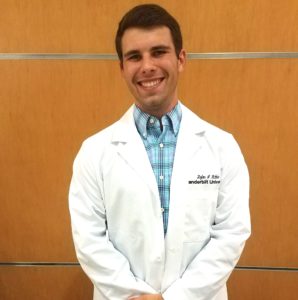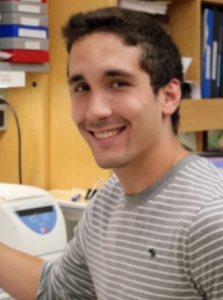Current Trainees
Current Trainees
Predoctoral Trainee/ Plate Lab

Dengue virus (DENV) and Zika virus (ZIKV) are two flaviviruses of particularly high public health concern, with currently no effective vaccines or anti-viral therapeutics available. DENV and ZIKV heavily rely on host proteins to facilitate viral replication and hijack cellular homeostasis pathways for pathogenesis, making them susceptible to disruption of host-virus interactions. My project will combine chemical biology tools with quantitative mass spectrometry methods to map host-virus interactomics with temporal resolution during infection, with the aim of identifying potential host factors as therapeutic targets to combat viral pathogenesis.
Predoctoral Trainee/ Lee Lab

Thyroid Hormone Receptor-Interacting Protein 12 (Trip12) functions as an E3 ubiquitin-protein ligase. Recent studies indicate that Trip12 may play a role in the Wnt pathway. Wnt signaling is known to be important during development and is frequently mutated in cancer. My ongoing graduate research is focused on characterizing the function of Trip12 in the Wnt pathway. I believe the results of my research will provide a better understanding of the basic biology of Wnt signaling and will be relevant to human health by informing on the development of novel therapeutics for Wnt-driven diseases.
Predoctoral Trainee/Ascano Lab

Our innate immune response is one of the first lines of defense against invading pathogens- yet many pathogens are capable of either evading this response or hijacking it for their own benefits. I seek to understand the underlying post-transcriptional gene regulatory mechanisms at play during the innate immune activation of cells with a specific emphasis on the interplay with RNA viruses (Zika, influenza, dengue, etc.). This is accomplished by utilizing a photoreactive ribonucleoside analog to covalently attach RNA-binding proteins to their cognate targets in living cells- allowing for the identification of both important transcripts and the proteins that bind them for use in downstream functional studies. The overarching goal is to understand the host-pathogen interactions of viral genomes and the host RNA binding proteins implicated in both promoting and preventing viral infection and replication.
Predoctoral Trainee/ Kendall Lab

We aim to exploit NF-κB signaling in macrophages via classical and alternative pathways. We hope that further understanding of NF-κB signaling will allow us to develop anti-tumor macrophages in breast and ovarian cancer models.
Predoctoral Trainee/ Knapik Lab

The Vanderbilt University Biobank (BioVU) serves as an excellent resource to study genetic association of genome variation with disease phenotypes. PrediXcan analysis on BioVU has implicated a wide array of skeletal, craniofacial, and neurological phenotypes significantly associated with reduced expression of RGP1. Rgp1 is part of a guanine nucleotide exchange factor (GEF) that binds Ric1 to activate Rab6a GTPase and promotes post-Golgi vesicle trafficking of collagen and other extracellular matrix (ECM) proteins. Little is known about the organismal requirement for Rgp1, and no vertebrate models have been developed to study its physiological function. To understand the cellular and molecular mechanisms underlying patient phenomes associated with reduced expression of RGP1, we established a zebrafish knockout approach to model rgp1 depletion. Our in vivo model will be used to investigate how global disruption of rgp1 manifests itself in skeletal, craniofacial, and neurological systems, and compared to human phenotypes.
Predoctoral Trainee/ Gama Lab

The Gama laboratory seeks to elucidate the molecular mechanisms that mediate stem cell pluripotency and regulate the decision to differentiate to a particular fate, with an emphasis on discovering the role of the BCL-2 family of proteins and other mitochondrial interactors. One protein of interest, MCL-1 (induced myeloid leukemia cell differentiation protein), is a BCL-2 family member that inhibits apoptosis. Previous data from our lab indicate that MCL-1 exerts a non-apoptotic function regulating the mitochondrial morphology and metabolic profile of human stem cells. MCL-1 regulates cell identity in human pluripotent stem cells and neural progenitor cells by interacting with DRP1 (dynamin related protein 1), which is involved in mitochondrial fission, and OPA1 (optic atrophy protein 1), which regulates mitochondrial fusion. However, less is known about the role of MCL-1 in more mature neurons and glial cells. My project will focus on examining the complex molecular mechanisms by which MCL-1 exerts this non-apoptotic function and how this regulation changes throughout neuronal differentiation.
Predoctoral Trainee/ Gould Lab

This aims to understand how Fic1, a protein found at the contractile ring, regulates septum formation to complete cytokinesis.
Predoctoral Trainee/ Pua Lab

We seek to understand if microRNAs (miRNAs) derived from the miR-23-24-27 paralogous clusters regulate immune cell metabolism to control effector responses.
